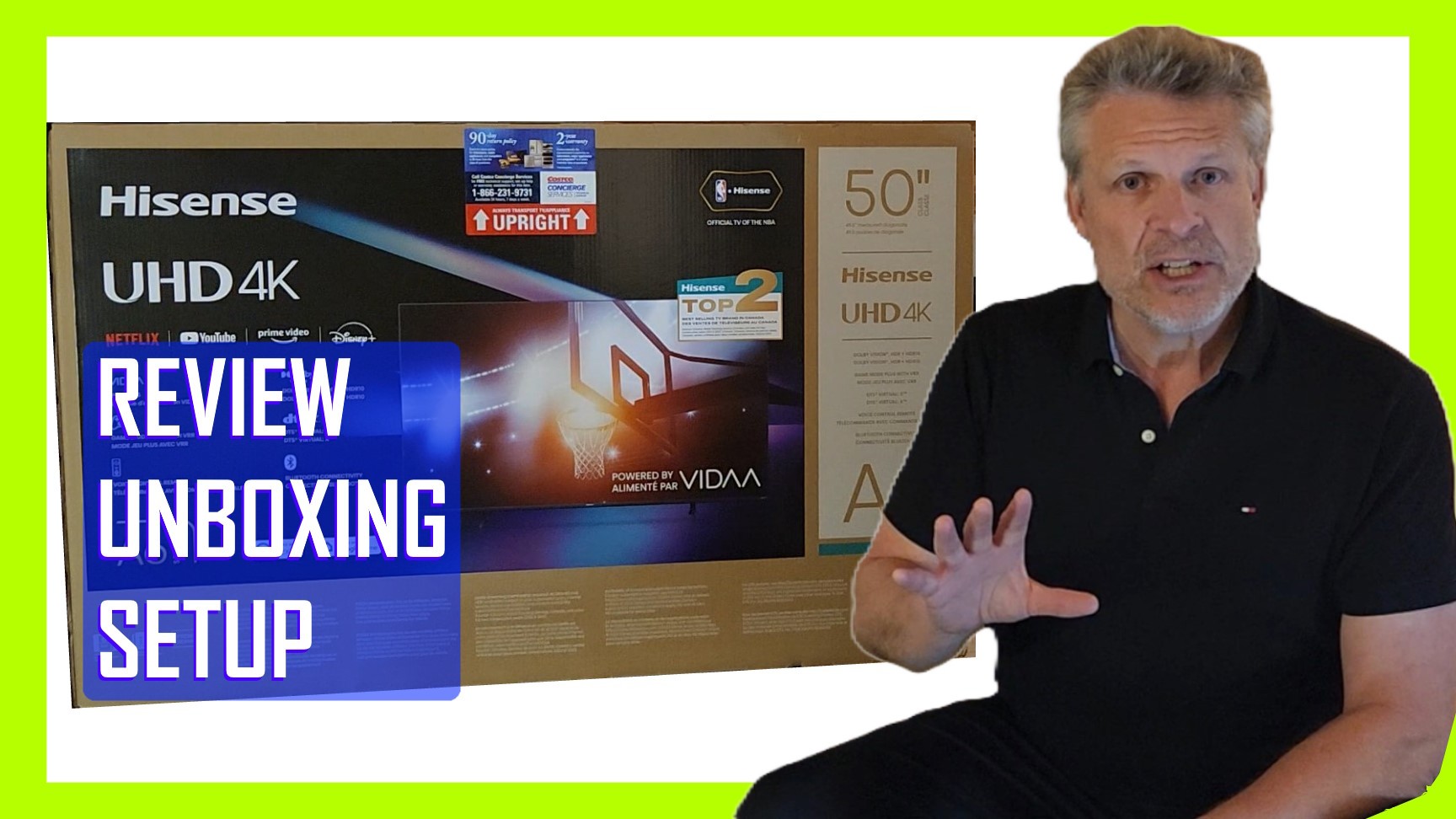

URTech.ca is dedicated to providing information on computer technology but usually focuses on Microsoft and Android products. However, consumer technology like televisions and smart speakers have become wildly popular and so from time to time we will include content like this explanation of some of the technology used in Hisense televisions.
This is a comprehensive review of the Hisense 50A6KV. In this video, we’ll take you through the unboxing and setup process, and provide an in-depth technology explainer comparing the Hisense A6 and A4 series.
Introduction and Overview [00:00:00]
Introduction to the video and the Hisense 50A6KV TV.
Comparison with other Hisense models and older LG TV.
Explanation of the naming convention for Hisense TVs.
Differences Between A4 and A6 Series [00:01:24]
Resolution: A4 series has 1080p, A6 series has 4K.
Brightness: A6 series has 350 nits, A4 series has 250 nits.
Audio Output: A6 series has 10W speakers, A4 series has 8W speakers.
Additional Features of A6 Series [00:02:58]
Color Gamut: A6 series has PFS coating.
Smart Features: A6 series supports Alexa and Google Home.
CPU: A6 series has eight CPU cores, A4 series has four.
Connectivity and Color Support [00:04:10]
Additional HDMI and USB ports in A6 series.
HDR10 and Dolby Vision support in A6 series.
Unboxing and Setup [00:08:27]
Unboxing the TV and listing the contents.
Instructions for removing the screen coating and attaching the legs.
Overview of the ports and their functions.
Smart TV Features and Final Review [00:11:32]
Overview of the Smart TV interface and available apps.
Setting up Netflix and other apps.
Final review and recommendation of the Hisense 50A6KV TV.
Unboxing the Hisense 50A6KV: See what’s inside the box and get a first look at this impressive TV.
Setup Guide: Step-by-step instructions to get your Hisense 50A6KV up and running.
A6 vs A4 Technology Comparison: Discover the differences between the Hisense A6 and A4 series, including display quality, smart features, and performance.
This website uses cookies.